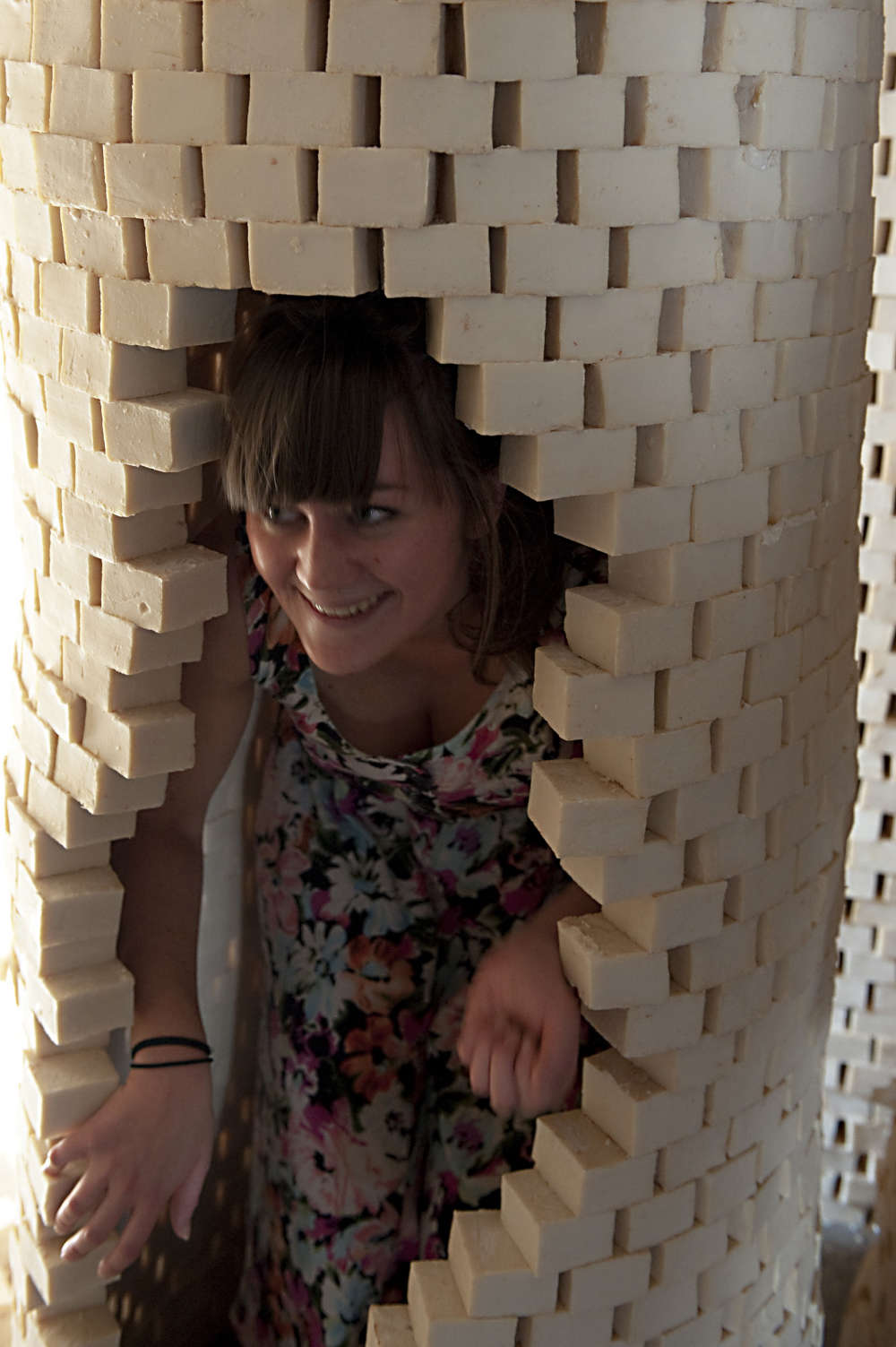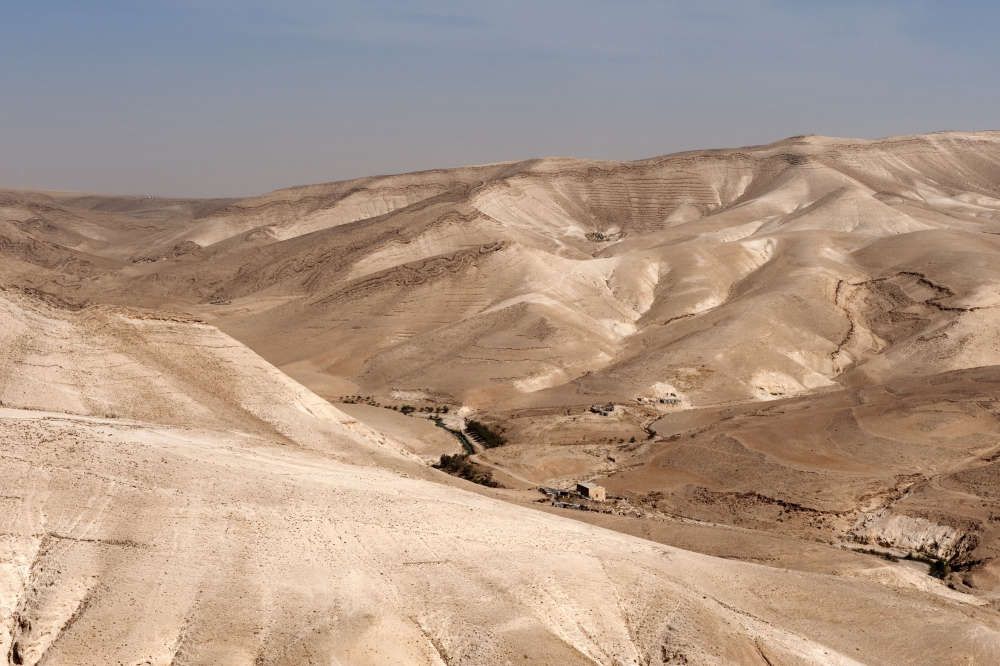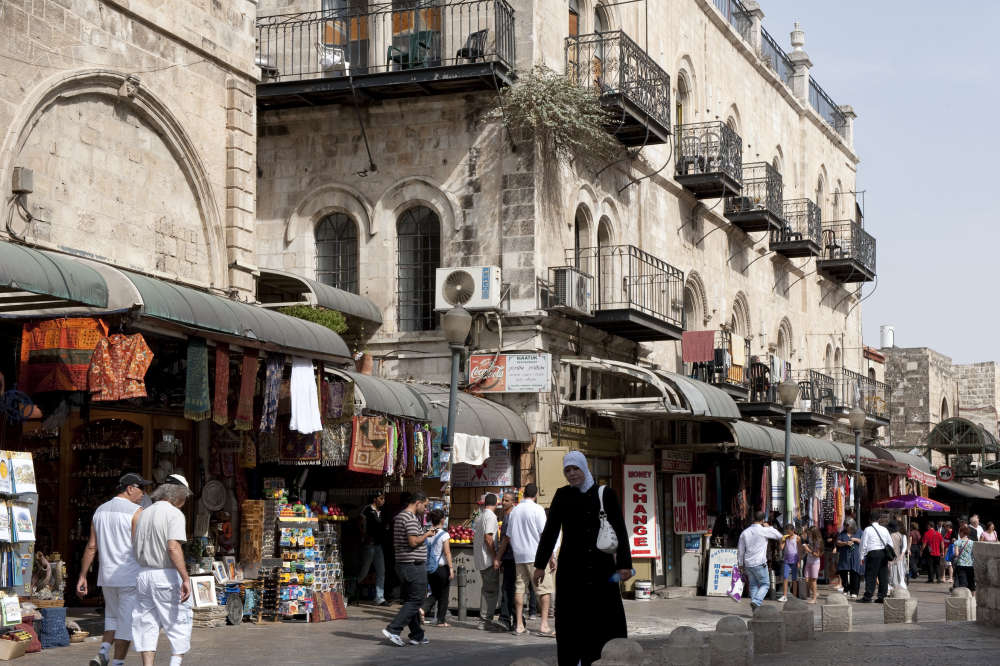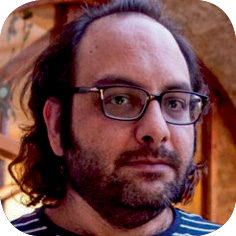When Sani* asked me to write this article on Palestine’s tourism export, I wondered whether I should approach it in a traditional analytic way, but finally I decided to start by sharing with you the challenges of writing such an article. Then again I thought perhaps we could list the beauties of Palestine, the riches of the destination, or the achievements of the Palestinian tourism sector, but for that I would rather refer you to the directory section of This Week in Palestine or to the August 2017 issue. Palestine’s tourism sector is definitely the most complex to analyze worldwide, as the mere realities created on the ground by the Israeli occupation lead to an abnormal normality.
In a normal tourism destination one would look at numbers first, but in Palestine the numbers are tricky. In the absence of Palestinian sovereignty and border control, the Palestinian Central Bureau of Statistics collects data on visitors at points of tourism affluence, notably the locations that serve the mass tourism industry, such as Bethlehem’s city center bus station where hordes of buses drop off groups of day-visitors for a brief stop at the Church of the Nativity. But how many individual visitors have we missed in the count?
If one chooses to look at tourism expenditure, one would look at the figures of the Palestinian government, but they do not represent the whole sector. With the ongoing occupation of Jerusalem, all Jerusalem companies declare their sales and income to the Israeli occupation authorities. And Jerusalem contains a concentration of numerous historical Palestinian tourism headquarters, such as tour operators, hoteliers, guides, and bus operators; thus the bulk of tourism-industry income is neither reported nor taxed by the Palestinian authorities but rather by the Israelis.
Now if we look at the United Nations World Tourism Organisation’s definition of a tourist, we find, “a visitor (domestic, inbound, or outbound) is classified as a tourist (or overnight visitor) when his/her trip includes an overnight stay.”i Therefore we should look at hotel overnights. The hotel sector in the West Bank has 7,215 available rooms, and in the first quarter of 2017, the hotel-room occupancy was 20.8 percent,ii generated by 122,163 tourists. The low occupancy rates are paired with a low sales price (group hotel rates in the Bethlehem area range from US$ 20 to US$ 40 per person in a double room on a half-board basis), thus creating a weak contribution to the local economy.
The lost potential of tourism for Palestine is growing daily with the more aggressive tourism policies of the Israeli occupation government’s plans. The expansion of settlements around the Jerusalem area and the earmarking of massive areas for hotel development and tourism activities in those settlements, notably East Jerusalem, Givat Hamatos, Har Homa, and the Dead Sea area, impact drastically the development of Palestinian tourism.
So let’s summarize: no sovereignty or border control means no airline taxes, no border taxes, no real figures for the number of visitors to Palestine, no continuity of territory; and Area C and Jerusalem under direct Israeli occupation means that we are losing a large chunk of the state income that could be generated by the tourism sector. No diversity of tourism means a seasonal service industry with low occupancy rates, except at peak seasons; and finally, an ever-growing Israeli-settlement tourism activity means a choking of the Palestinian tourism sector.
You will hear most first-time travellers to Palestine say the same thing: “We did not expect this!” or “We’re happy we came despite…” and then they will tell you how their relatives, friends, or partners told them not to come to Palestine. The entrenchment of the Israeli government’s narrative impacts drastically Palestinian tourism’s potential for development. Most visitors will have an image of conflict zones nourished by a horror tale about Palestine and the Palestinians.

The Israeli government long ago came to understand two main elements of tourism development: targeting the mid- to high-end tourism markets is essential to develop a thriving tourism destination, and tourism and tourists are the best carriers of a national narrative based on their in-country experience. Israel has been actively inviting prominent food, fashion, culture, and entertainment personalities and bloggers on tours of Israel to promote its tourism image worldwide in glossy magazines and social media. As I can hear Sani’s voice telling me that it’s supposed to be a bright story on Palestine’s tourism sector, let us look at the positives.

Palestine’s landscape, historical sites, and thriving youth should be the gateway to diversify tourism. I can now see the hundreds of development plans over the last twenty years that have identified the need to diversify Palestine’s tourism offer.
The few tourists who come to Palestine for tourism, and not for pilgrimages or solidarity, are the ones who have longer average overnight stays and spend more money in Palestine. During their stay, they will prioritize quality over quantity, enjoy a leisurely visit of the country, experience local cuisine, shop in the souks of Nablus, Hebron, and Bethlehem, and meet the locals of all walks of life. Very often they will either come back or be perfect promoters of Palestine as a tourism destination.
Palestine, in spite of the occupation, can meet four of the main tourism needs outlined by the UN World Tourism Organization UNWTO/World Travel Market 2017 Minister’s Summit titled Overtourism: Growth Is Not the Enemy, It Is How We Manage It That Counts.iii The suggestions outlined the need to diversify visitor activities, implement effective and integrated mechanisms and policies to manage visitors at sites, apply policies to reduce seasonality, and set up incentives for the private sector to invest in new areas and new products.
The existing small initiatives have to be encouraged to foster change and enhance geographic repartition of tourists in Palestine: from the small charming guesthouses in Sebastiya, the Old City of Nablus, Nabi Musa, Jericho, and Bethlehem to the creative hantouriv rides in Jericho and walking tours of Hebron, the arts world with the new Palestinian museumsv and galleries that are opening up, and the food and wine scene with rising Palestinian chefs and wine-makers.
The necessity to concentrate on the development and encouragement of the other tourism sectors does not mean that the religious tourism sector has to be abandoned. On the contrary, as with the examples of Lourdesvi in France and Fatimavii in Portugal, pilgrimages will always exist and have to be preserved and strengthened as they will be the backbone for a diverse and rich tourism sector.

In Palestine, there is still a long way to go to attract Muslim pilgrims and to promote Christian pilgrimages to new markets. The potential for growth in the pilgrimage sector will grow exponentially and will support the building of the destination and brand: Palestine.
The various sector actors within this pilgrimage-specific chain will grow in capacity and quality, the religious handicrafts will go on supplying the local and international markets with olive-wood and mother-of-pearl handicrafts, the mass tourism restaurants will flourish feeding large numbers of excursionists, and the bus companies will increase their presence in Palestine’s most visited religious sites.
Palestine has to become a normal and diverse tourism destination like every other tourism destination in order to overcome the realities of occupation and go beyond as the flagship sector of the Palestinian economy and exports. Tourism is the game-changer in terms of international image, preservation of our cultural heritage, and promotion of our culinary identity.
Fadi Kattan, a tourism analyst, chef, and hotelier at the Hosh Al-Syrian in Bethlehem, has worked in Paris, London, and Palestine on tourism development, marketing, sustainability and strategy, food and gastronomy promotion, and international tourism relations.
* Sani Meo, publisher of TWiP.
Article photos by Palestine Image Bank
i UNWTO: “Understanding Tourism: Basic Glossary,” in Methodological Notes to the Tourism Statistics Database, 2015.
ii Palestinian Central Bureau of Statistics: “Main Indicators for Hotel Activities by Month and Region During the First Quarter,” 2017.
iii http://cf.cdn.unwto.org/sites/all/files/pdf/concept_note_provprog_unwto_wtm_summit_17.pdf.
iv Palestinian horse-drawn carriage.
v The year 2016 saw the opening of the Palestine Museum, the Yasser Arafat Museum, and Bab Iddeir Gallery.
vi Six million tourists in 2016.
vii Five million tourists in 2016.


